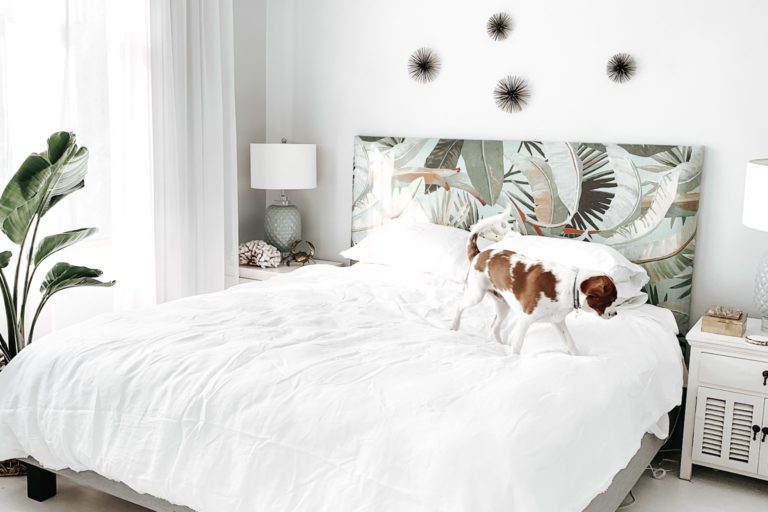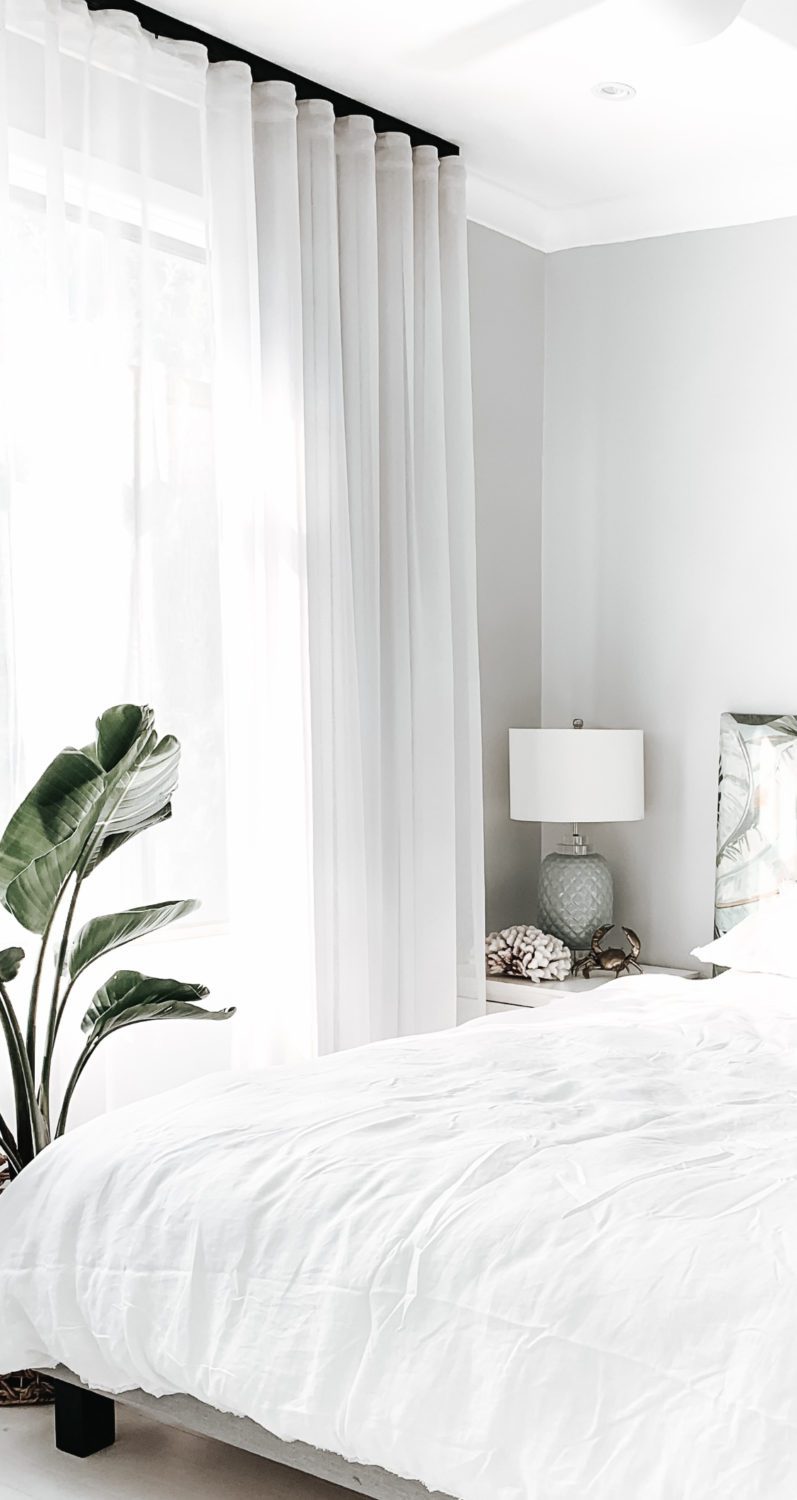INTERIOR DESIGN
Bedroom styling tips

WORDS: Kathryn Borglund, @house_of_hanalei PHOTOGRAPHY Supplied
One of the most important rooms of the house, the bedroom is a place to unwind at the end of the day. It can bring a sense of calm and help you detach from the busy day that was. This is why making your bedroom a beautiful, relaxing space is so important. We caught up with Kathryn Borglund, Interior designer and Stylist, to get her tips on styling the perfect bedroom.
Step 1: Selecting and placing the bed
When designing a bedroom, the best place to start is with the most important piece, the bed. This is your anchor point of the bedroom and your blank canvas which you will add layers to create your bedroom. The selection and style of your bed is crucial as this will be the focal part of the room. It’s also where you will spend a third of your life so it’s a good place to splurge.
Placing your bed on a wall that is visually appealing when you walk in the door is important for the layout of the room. I try to position the bed so when you walk in the room it is the focal point of the space.
I suggest going safe with your chosen bed design and make an adaptable selection that you can alter with changing trends. I love to use a simple rectangular upholstered bedhead covered in an eye-catching fabric. Every few years or so you can reupholster your bedhead in another fabric and give the room a refresh.
Step 2- Dressing Your Bed
The selected fabric on your bedhead will be the starting point and language for the rest of the room design. We have used a Catherine Martin Fabric called La Palma which I adore, I have kept the rest of the room rather neutral so the fabric is what your eye is drawn to.
It’s a good idea to keep your bed linen neutral and limit patterns, especially if you have used a loud fabric on your bed head. I love to use crisp white linen bedding, Dri–Glo Australia has an amazing range that is beautifully crafted and feels amazing. I often use their linen quilt and sheet set as it’s a great base to build off. Include 4 plush sleeping cushions, two you sleep on and two for display that have some extra volume. Pair them with a pair of complementary decorative cushions in front of your sleeping cushions to add some additional colour and texture.
Step 3- Select Furniture & Lighting
Select bedside tables that are of a similar scale to your bed size. The bigger the bed, the larger the side tables, but make sure you can fit one on both sides of your bed to keep it symmetrical. The bed in the image is king-size which I have paired with bedside tables that are solid and relatively large, so they don’t get lost.
It’s helpful to select bedside tables that have drawers or cupboards so you can hide the everyday bedside clutter and keep a sense of calm in the room.
Next comes selecting your bedside table lamps, these too should be relative in scale to your bed size. I love to incorporate large lamps with a neutral lampshade and complementary colour that works with the rest of your scheme.
Step 4- Add some fluff
Now for some fluff, add a few simple accessories to your bedside tables. I love to use corals and boxes to store valuables in to keep everything tidy. Artwork behind the bed is a fun way to add some personality. I try to opt for non-glass art just in case it were to fall. Plants add some nature and make the space feel fresh. I’ve used brass sea Urchins from Freedom Furniture behind the bed, they have been placed in an organic layout.
Step 5- Dress your windows
I love to use full-height neutral block-out and sheer curtains hung from the ceiling. This creates the illusion the ceilings are higher, and the space is larger. Using a neutral colour doesn’t overshadow your other furniture selections and rather softens the space. A good tip is to use block out curtains behind the sheers so you can have privacy and light all day long. Another favourite of mine to use are the Sheer curtains from Dri-Glo, they have a beautiful and natural feel to them.











